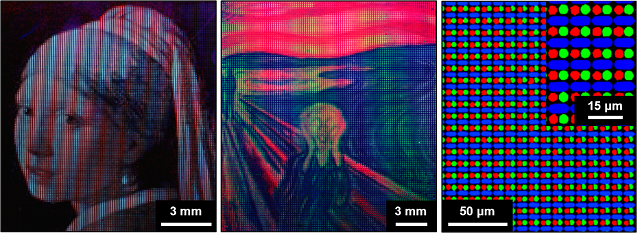
[Courtesy of UNIST]
The global demand for ultra-high-resolution displays for wearable devices is steadily increasing thanks to the popularity of smartwatches and internet of things (IoT) devices that can be worn like glasses and headsets. Many wearable devices have curved displays to enhance their wearability even in active motion. However, such displays need to have high-resolution capabilities to accurately show images and texts because they are very small, about the size of a thumbnail.
Perovskite nanocrystals are a class of nanocrystals regarded as a next-generation material for ultra-high-resolution quantum dot displays. They can be used as a material capable of producing thin and curved high-resolution displays, but nanocrystal displays are chemically and physically unstable, requiring complicated equipment and processes to manufacture perovskite displays.
A research team from the Ulsan National Institute of Science and Technology (UNIST) teamed up with researchers from Daegu Gyeongbuk Institute of Science and Technology (DGIST) to develop the transfer-patterning technique for perovskite nanocrystal displays. They produced a display with RGB pixel patterns of 2,550 pixels per inch, which is about 400 percent higher resolution than the latest high-end smartphones.
While conventional circuit boards and semiconductors for perovskite light emitting diodes (LEDs) require a series of etching processes to cut away unwanted circuit parts and only leave very finely designed circuit boards. However, such a method required complicated procedures with a high defect rate.
The newly developed technique allows manufacturers simply "stamp" layers of perovskite nanocrystal LEDs (PeLEDs) for easy and quick production. The printed PeLEDs have outstanding electroluminescence characteristics and can be adhered to curved surfaces like the skin or a leaf. It can also withstand forces created by twisting and bending.
"By greatly increasing the resolution of the PeLED-based displays, we expect them to be used in a wide range of sectors. The display will help increase the immersive experience of virtual reality and augmented reality devices by actualizing screens with higher resolutions than conventional screens," UNISt researcher Choi Moon-kee said in a statement on November 1.
Copyright ⓒ Aju Press All rights reserved.




